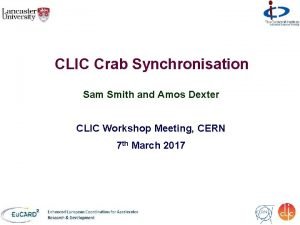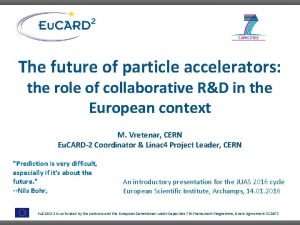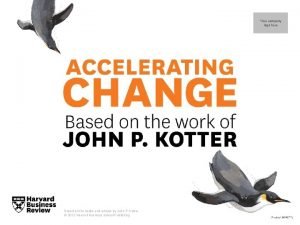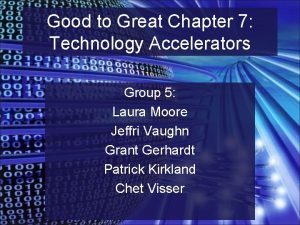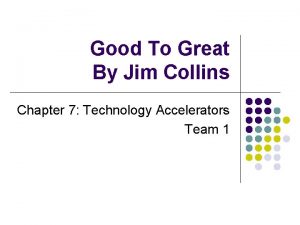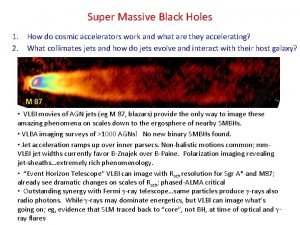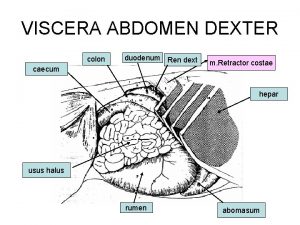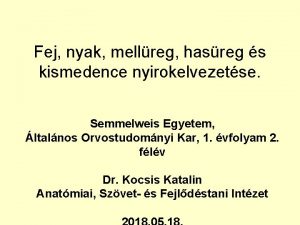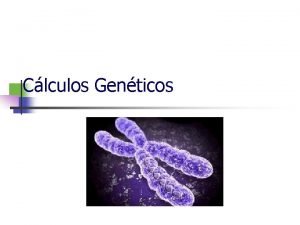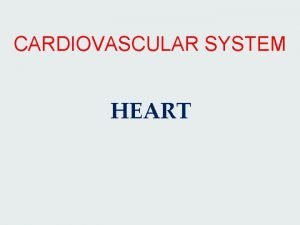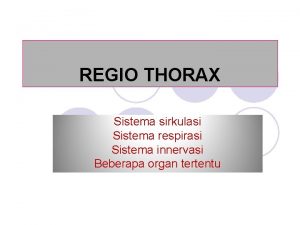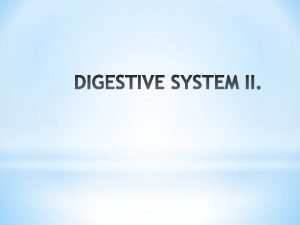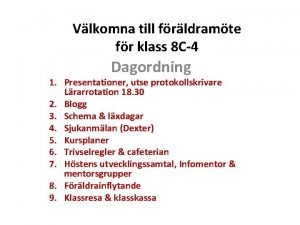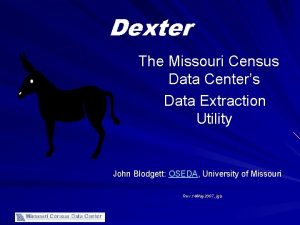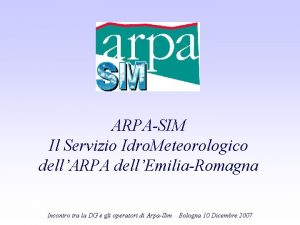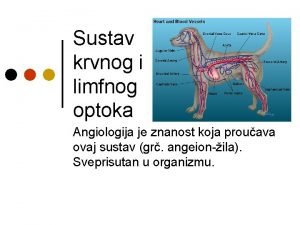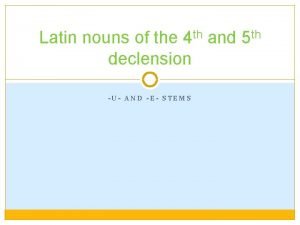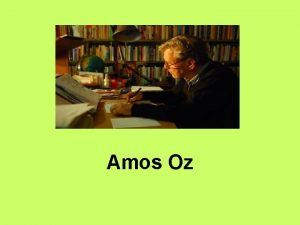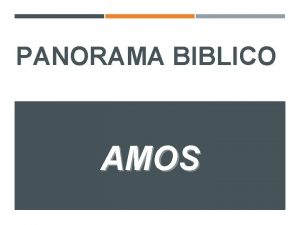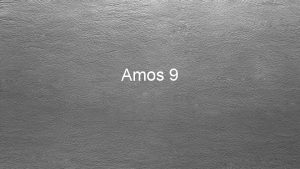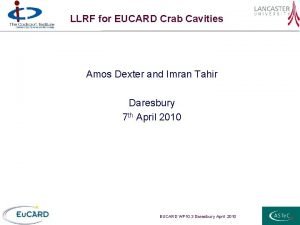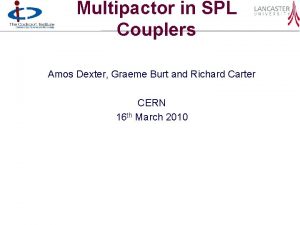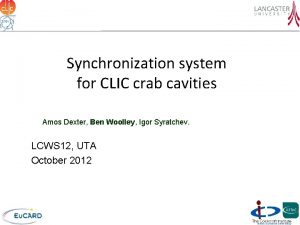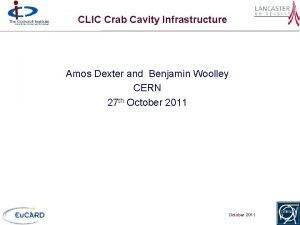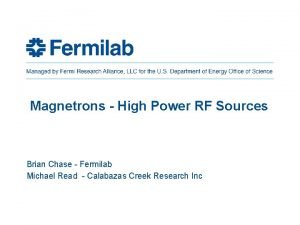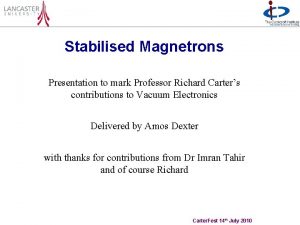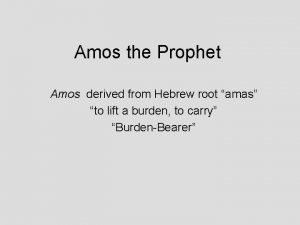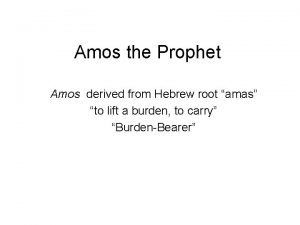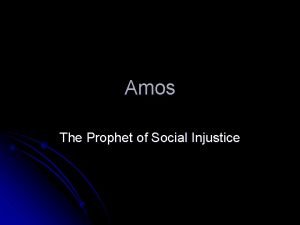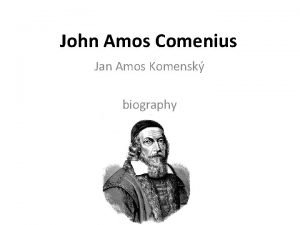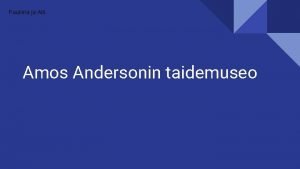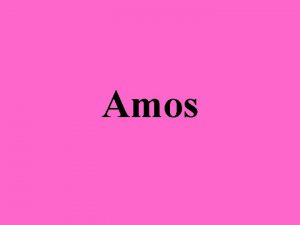Magnetrons for accelerators Amos Dexter PLAN History Opportunities































- Slides: 31

Magnetrons for accelerators Amos Dexter PLAN • History • Opportunities • Current status • Magnetron efficiency • Magnetron phase locking

The Reflection Amplifier • Linacs require accurate phase control • Phase control requires an amplifier Cavity • Magnetrons can be operated as reflection amplifiers Compared to Klystrons, in general Magnetrons Magnetron Load Circulator Injection Source - are smaller - more efficient - can use permanent magnets - utilise lower d. c. voltage but higher current - are easier to manufacture Consequently they are much cheaper to purchase and operate J. Kline “The magnetron as a negative resistance amplifier, ” IRE Transactions on Electron Devices, vol. ED 8, Nov 1961 H. L. Thal and R. G. Lock, “Locking of magnetrons by an injected r. f. signal”, IEEE Trans. MTT, vol. 13, 1965 En. Efficient RF Sources Workshop Daresbury June 2014

History Single magnetrons 2. 856 GHz, 5 MW, 3 ms pulse, 200 Hz repetition are used to power linacs for medical and security applications. Multiple magnetrons have been considered for high energy normal conducting linacs but the injection power needed for an unstabilised magnetron made it uncompetitive with a Klystron. J. C. Slater “The Phasing of Magnetrons” MIT Technical Report 35, 1947 Overett, T. ; Bowles, E. ; Remsen, D. B. ; Smith, R. E. , III; Thomas, G. E. “ Phase Locked Magnetrons as Accelerator RF Sources” PAC 1987 Benford J. , Sze H. , Woo W. , Smith R. , and Harteneck B. , “Phase locking of relativistic magnetrons” Phys. Rev. Lett. , vol. 62, no. 4, pp. 969, 1989. Treado T. A. , Hansen T. A. , and Jenkins D. J. “Power-combining and injection locking magnetrons for accelerator applications, ” Proc IEEE Particle Accelerator Conf. , San Francisco, CA 1991. Chen, S. C. ; Bekefi, G. ; Temkin, R. J. “ Injection Locking of a Long-Pulse Relativistic Magnetron” PAC 1991 Treado, T. A. ; Brown, P. D. ; Hansen, T. A. ; Aiguier, D. J. “ Phase locking of two longpulse, high-power magnetrons” , IEEE Trans. Plasma Science, vol 22, p 616 625, 1994 Treado, Todd A. ; Brown, Paul D. , Aiguier, Darrell “New experimental results at long pulse and high repetition rate, from Varian's phase-locked magnetron array program” Proceedings Intense Microwave Pulses, SPIE vol. 1872, July 1993 En. Efficient RF Sources Workshop Daresbury June 2014 Courtesy of e 2 v

Low Noise State for Cooker Magnetrons The Magnetron A Low Noise, Long Life Amplifier This author, a leading proponent of the transmission of power via microwave beams, describes how the common microwave oven magnetron can be externally locked to provide 30. d. B of gain resulting in a 500 watt, 70% efficient, $15, coherent microwave source. William C. Brown Consultant Weston, Massachusetts The 2450 MHz magnetron which supplies 700 watts of average power to the ubiquitous microwave oven is made in a quantity of 15, 000 units annually at a very low price, less than $15. It has a high conversion efficiency of 70% and small size and mass. What is not generally rec ognized is that it has very low noise and long life properties, and that it can be combined with external circuitry to convert it into a phase locked amplifier with 30 d. B gain, without compromising its noise or life properties. Such amplifiers are ideal for combining with slot ted waveguide radiators to formradiating modules in a low cost , electronically steerable phased array for beamed power , which motivated this study. However, there are conceivably numerous other practical purposes for which these properties can be utilized. The low noise and long life properties are associated with a feedback mechanism internal to the magnetron that hold s the emission capabilities of the cathode to those levels consistent with both low noise and Jong life. This internal feedback mechanism is effective when the magnetron is operated from a relatively well filtered DC power supply with the cathode heated by back bombardment power alone. APPLIED MICROWAVE Summer 1990 En. Efficient RF Sources Workshop Daresbury June 2014

Pushing Curves and Low Noise State These measurements were made with the magnetron running in a phase locked loop. Pushing for Panasonic 2 M 137 Anode current is varies as the external match is varied. Low noise state associated with low heater power and low anode current En. Efficient RF Sources Workshop Daresbury June 2014

Amplifier Selection Magnetron Gyro-Klystron Frequency Above ~ 200 MHz above a few GHz Above ~ 350 MHz Peak Power Lower High Average power Lower High Gain Lower High Tuneable range Large Small Instantaneous bandwidth Smaller Small Slew rate Smaller Small Noise figure Higher Lower Best Efficiency L band ~ 90% ILC ~ 69% Best Efficiency X band ~ 50% Pushing figure Significant Pulling figure Significant Amplifier cost Low high Modulator & magnet cost Lower very high En. Efficient RF Sources Workshop 50% XL 5 = 40% Significant Daresbury June 2014

Opportunities Our conceptual application was for intense proton beams as would be required for a neutrino factory or future spallation sources. Magnetrons can become an option for intense proton beams where they give significantly greater efficiency than other devices and bring down the lifetime cost of the machine without sacrificing performance and reliability. The easiest applications are where beam quality is not a key issue. En. Efficient RF Sources Workshop Daresbury June 2014

A Magnetron Solution for SPL? https: //indico. cern. ch/event/63935/session/1/contribution/73 Permits fast phase control but only slow, full range amplitude control A substantial development program would be required for a 704 MHz, 880 k. W long pulse magnetron Standard Modulator Pulse to pulse amplitude can be varied Cavity 880 k. W Magnetron Load 4 Port Circulator Slow tuner ~ -13 d. B to -17 d. B needed for locking i. e. between 18 k. W and 44 k. W hence between 42 k. W and 16 k. W available for fast amplitude control 60 k. W IOT Could fill cavity with IOT then pulse magnetron when beam arrives En. Efficient RF Sources Workshop Daresbury June 2014 LLRF

Magnetron Exciting Superconducting cavity Demonstration of CW 2. 45 GHz magnetron driving a specially manufactured superconducting cavity in a vertical test facility at JLab and the control of phase in the presence of microphonics was successful. First demonstration and performance of an injection locked continuous wave magnetron to phase control a superconducting cavity A. C. Dexter, G. Burt, R. Carter, I. Tahir, H. Wang, K. Davis, and R. Rimmer, Physical Review Special Topics: Accelerators and Beams, Vol. 14, No. 3, 17. 03. 2011, p. 032001. http: //journals. aps. org/prstab/abstract/10. 1103/Phys. Rev. STAB. 14. 032001 En. Efficient RF Sources Workshop Daresbury June 2014

Protons at Fermi. Lab FERMILAB-PUB-13 -315 -AD-TD High power magnetron transmitter as an RF source for superconducting linear accelerators Grigory Kazakevich*, Rolland Johnson, Gene Flanagan, Frank Marhauser, Muons, Inc. , Batavia, 60510 IL, USA Vyacheslav Yakovlev, Brian Chase, Valeri Lebedev, Sergei Nagaitsev, Ralph Pasquinelli, Nikolay Solyak, Kenneth Quinn, and Daniel Wolff, Fermilab, Batavia, 60510 IL, USA Viatcheslav Pavlov, Budker Institute of Nuclear Physics (BINP), Novosibirsk, 630090, Russia A concept of a high power magnetron transmitter based on the vector addition of signals of two injection locked Continuous Wave (CW) magnetrons, intended to operate within a fast and precise control loop in phase and amplitude, is presented. This transmitter is proposed to drive Superconducting RF (SRF) cavities for intensity frontier Ge. V scale proton/ion linacs, such as the Fermilab Project X 3 Ge. V CW proton linac or linacs for Accelerator Driven System (ADS) projects. The transmitter consists of two 2 cascade injection locked magnetrons with outputs combined by a 3 d. B hybrid. In such a scheme the phase and power control are accomplished by management of the phase and the phase difference, respectively, in both injection locked magnetrons, allowing a fast and

High Efficiency Proven at L Band

Efficiency For good efficiency need to have slow electrons hitting the anode. J. C. Slater, “Microwave Electronics”, Reviews of Modern Physics, Vol 18, No 4, 1946 Simple estimate • High magnetic field important for good efficiency • Can high efficiency be achieved when magnetron is injection locked? • Low external Q is needed for stable locking over a useable bandwidth • Low external Q is good for efficiency Radius Cathode Radius Anode voltage ~Electric field Magnetic field Nominal Efficiency rc (mm) ra (mm) V E (V/m) B (T) h 800 W Cooker 1200 W Cooker SPL 704 MHz 1. 93 2. 96 17. 74 4. 35 5. 80 24. 01 4000 41876 1. 65 E+06 1. 41 E+06 6. 68 E+06 0. 185 0. 135 0. 413 77. 3% 69. 1% 92. 9% En. Efficient RF Sources Workshop Daresbury June 2014

PIC Code Modelling RF Output Cathode inefficient RF Input efficient B field into page Have used VORPAL and MAGIC to simulate magnetrons Takes a huge amount of time to get a single operating point Gets impedance incorrect for efficient cooker magnetrons Prefer to assume RF field and compute trajectories in a self consistent d. c. field En. Efficient RF Sources Workshop Daresbury June 2014

VORPAL model of 2 M 137 Panasonic magnetron 5. 2 ns 5. 6 ns 6. 0 ns 11. 15 ns 23. 1 ns 36. 24 ns 37. 40 ns 38. 60 ns 39. 42 ns 39. 80 ns 41. 00 ns 45. 80 ns

Magnetron Start Up • No RF seeding /RF injection has been used in previous slide. • Spoke growth requires noise. The noise comes from mesh irregularities and random emission. • Start up time is mesh dependent. • Start also requires sufficient charge to collect in cathode anode gap. • Without random emission and mesh irregularity all electrons return to cathode and the magnetron does not start. • Once the rotating charge has a certain density and extent, the spokes form very quickly. • A lot of time is wasted with PIC models waiting for the magnetron to start. • Conversely a problem with steady state models is that one does not necessarily know how to get to the operating point that was modelled. En. Efficient RF Sources Workshop Daresbury June 2014

Magnetron Operation Panasonic 2 M 137 Results from a self consistent model with a coiled cathode Electrons can leave from any point on coil hence emission points are within the inner circle marking the outside radius of the cathode Electrons can spiral between turns contributing to space charge at the cathode. If the electrons become synchronous with the RF then they move to the anode in about 5 arcs. Most electrons return to the cathode. En. Efficient RF Sources Workshop Daresbury June 2014

Orbits in high efficiency 2. 45 GHz cooker design 0, 003 0, 002 ANODE VANE 0, 001 0, 000 CATHODE -0, 001 ANODE VANE -0, 002 B = 2. 2 T, V = 4000, IA=1. 13 A, VRF=2450 V, P=3. 86 k. W, Eff = 86%, Solid Cathode 1880 K -0, 003 -0, 006 -0, 005 -0, 004 -0, 003 -0, 002 -0, 001 0, 000 0, 001 0, 002 0, 003

Field in high efficiency 2. 45 GHz cooker design k. V/m Radial d. c. Electric Field (self consistent) 0 -200 -400 -600 -800 -1000 -1200 -1400 -1600 -1800 -2000 At this operating point the field at cathode is just negative. Field at cathode becomes positive as cathode temperature increases or anode current decreases. To get a stable calculation mesh size near cathode ~ 2 microns 0, 0 0, 5 1, 0 1, 5 2, 0 2, 5 mm from cathode Efficiency as function of RF Voltage 100% Efficiency peaks as tops of cusps coincide with anode. 90% 80% 70% 60% 50% 40% 2300 2400 2500 2600 2700 2800 2900 3000 Calculations are not fully realistic as to change the RF voltage one has to change external Q and this changes the frequency RF voltage En. Efficient RF Sources Workshop Daresbury June 2014

Orbits for 1 MW 704 MHz design An efficient orbit should have no loop, electronic efficiency prediction ~ 96% En. Efficient RF Sources Workshop Daresbury June 2014

Reflection Amplifier Controllability 1. Phase of output follows the phase of the input signal 2. 3. Phase shift through magnetron depends on difference between input frequency and the magnetrons natural frequency Output power has minimal dependence on input signal power (Should add) 4. Phase shift through magnetron depends on input signal power 5. There is a time constant associated with the output phase following the input phase Anode Voltage 915 MHz 10 k. W 20 k. W 916 MHz 30 k. W 40 k. W 12. 0 k. V 3. 00 A 11. 5 k. V 2. 92 A Magnetron frequency and output vary together as a consequence of 1. Varying the magnetic field 2. Varying the anode current (pushing) 3. Varying the reflected power (pulling) 0 o Arcing Power supply load 11. 0 k. V line 2. 85 A 900 W 800 W 700 W 2. 78 A 10. 5 k. V 2 270 o 2. 70 A 10. 0 k. V 1 towards magnetron Moding 2 3 Anode Current Amps 4 5 Magnetic field coil current VSWR 3 4 6 90 o +5 MHz +2. 5 MHz -2. 5 MHz 180 o +0 MHz

Frequency Stabilisation with Phase Lock Loop (PPL) En. Efficient RF Sources Workshop Daresbury June 2014

PLL Board Layout En. Efficient RF Sources Workshop Daresbury June 2014

Spectrum with PLL frequency control Heater Power = 4. 2 W Bandwidth ~ 100 k. Hz En. Efficient RF Sources Workshop Daresbury June 2014

Magnetron Layout for Locking En. Efficient RF Sources Workshop Daresbury June 2014

Phase & Freq Shift Keying Injection Locked Magnetron The performance of a magnetron in the control loop of a phase locked accelerator cavity depends on its bandwidth. Its bandwidth determines how quickly it can respond to a new required phase. En. Efficient RF Sources Workshop Daresbury June 2014

Frequency Shift Keying Input to pin diode Output from double balanced mixer after mixing with 3 rd frequency Lower trace is output from double-balance mixer when magnetron injection signal is switched from 2. 452 to 2. 453 GHz at a rate of 250 kb/s (upper trace) and referenced to 2. 451 GHz. En. Efficient RF Sources Workshop Daresbury June 2014

Response as function of heater power Input wave 8 W heater 15 W heater 36 W heater 43 W heater Matched. Mismatch ~13% reflected power at 100 deg towards load. En. Efficient RF Sources Workshop Daresbury June 2014

Phase Control in Warm Cavity Double Balance Mixer Oscilloscope 2 Stub Tuner 2 Water Load 1 W Amplifier Loop Coupler C 3 Circulator 1 3 Stub Tuner 1 Circulator 2 Water Load Loop Coupler 10 Vane Magnetron Load IQ Modulator (Amplitude & phase shifter) D/A A/D Power supply ripple Oscilloscope D/A DSP Digital Phase Detector 1. 3 GHz D/A ÷M Magnetron phase no LLRF LP Filter 8 k. Hz cut-off ÷M pk-pk 26 o High Voltage Transformer Frequency Divider / N Divider /R Micro. Controller 10 MHz TCXO 1 ppm 2. 3 - 2. 6 GHz PLL Oscillator ADF 4113 + VCO 40 k. Hz Chopper Pulse Width Modulator SG 2525 1. 5 k. W Power Supply Phase - Freq Detector & Charge Pump ADF 4113 Loop Filter 325 V DC + 5% 100 Hz ripple Magnetron phase with LLRF pk-pk 1. 2 o

Prospects • Intense beams in user facilities need to be generated efficiently. • Developing a new HPRF source is expensive and comparison to available sources is difficult before development is mature. • Would not use magnetron for a superconducting linac if klystron affordable. • Universities will continue to explore new concepts. • Need accelerator labs to explore new devices at accelerator test stands to have any chance of new devices becoming feasible alternatives. • Future accelerators constrained on cost so research on efficient low cost sources is worthwhile. En. Efficient RF Sources Workshop Daresbury June 2014

Extra Slides

SCRF cavity powered with magnetron Injection but magnetron off Injection + magnetron on + control
 Amos dexter
Amos dexter The long-term future of particle accelerators
The long-term future of particle accelerators Accelerators computer architecture
Accelerators computer architecture Slidetodoc
Slidetodoc Good to great technology accelerators
Good to great technology accelerators Good to great chapter 6
Good to great chapter 6 Cosmic super accelerators
Cosmic super accelerators Analytics query accelerators
Analytics query accelerators Viscera abdomen adalah
Viscera abdomen adalah Ductus cysticus
Ductus cysticus Auricula dextra et sinistra
Auricula dextra et sinistra Https://fyrkanten.dexter-ist.com
Https://fyrkanten.dexter-ist.com Nodi lymphatici parasternales
Nodi lymphatici parasternales Evans tries an o level introduction
Evans tries an o level introduction Mendel cruzou duas variedades de mirabilis
Mendel cruzou duas variedades de mirabilis Truncus pulmonalis
Truncus pulmonalis 8 pasos del patron del exito amway
8 pasos del patron del exito amway Auricula dexter
Auricula dexter Tori dexter
Tori dexter Aria nuda
Aria nuda Pars membranacea septum interventriculare
Pars membranacea septum interventriculare Dagordning föräldramöte
Dagordning föräldramöte Dunphy's stages of adolescent group development
Dunphy's stages of adolescent group development Dexter data extraction
Dexter data extraction Arpasim
Arpasim Truncus brachiocephalicus dexter
Truncus brachiocephalicus dexter Hjartalokur
Hjartalokur Ductus hepaticus dexter
Ductus hepaticus dexter Bronchus lobaris superior dexter
Bronchus lobaris superior dexter Genu declension
Genu declension Singkatan dokter hewan
Singkatan dokter hewan Martin luthor king
Martin luthor king
